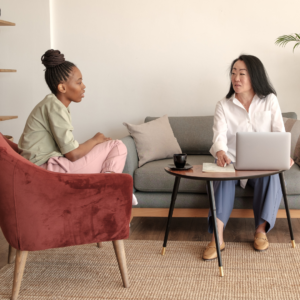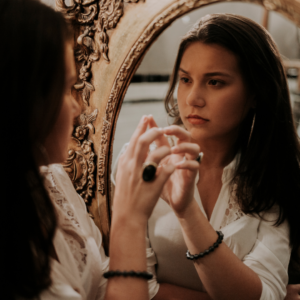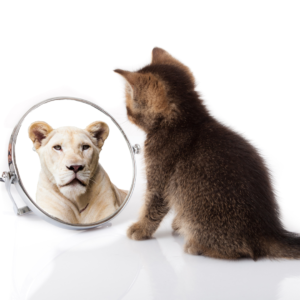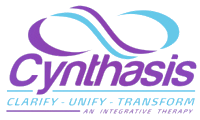 I began giving sessions in college as an undergraduate in a program called P.E.A.C.E. I would walk around helping fellow students adjust to college life, answer questions and listen to their challenges. It was a peer counseling program sponsored by the National Institute of Health. We learned and practiced counseling using Person-Centered Therapy developed by Carl Rogers. Person-C Therapy is a non-directive client-centered method. Rogers taught congruence: “A close matching ‘between what is being experienced at the gut level, what is present in awareness and what is expressed to the client.” (Rogers, 1980; 116). The goal of congruence is for the client as well as the task of the therapist. He taught the more we as therapists are ourselves within the relationship vs. putting up a professional front, the more our clients will benefit.
I began giving sessions in college as an undergraduate in a program called P.E.A.C.E. I would walk around helping fellow students adjust to college life, answer questions and listen to their challenges. It was a peer counseling program sponsored by the National Institute of Health. We learned and practiced counseling using Person-Centered Therapy developed by Carl Rogers. Person-C Therapy is a non-directive client-centered method. Rogers taught congruence: “A close matching ‘between what is being experienced at the gut level, what is present in awareness and what is expressed to the client.” (Rogers, 1980; 116). The goal of congruence is for the client as well as the task of the therapist. He taught the more we as therapists are ourselves within the relationship vs. putting up a professional front, the more our clients will benefit.
 What a quandary. We are taught to show up in sessions with a certain presence, focus on specific things based on diagnosis and treatment plans, and not share personal information, yet we are invited to not put up a front. And, out of session, we worry about getting enough trainings, doing things correctly and comparing ourselves to our colleagues. Cara Alwill Leyba, author Girl Code says, “We tend to stack ourselves up against everyone else and pick ourselves apart based on what other people are doing. This practice does nothing to make us better.” You were great before you became a therapist, and you are during and will be after. Knowledge does not define you. Other people can’t define you. You are amazing. Trust yourself! If you want to strengthen this internal muscle of knowing your greatness, try the You Are Magnificent exercise from The Curious Voyage: A Rule-Breaking Guidebook to Authenticity.
What a quandary. We are taught to show up in sessions with a certain presence, focus on specific things based on diagnosis and treatment plans, and not share personal information, yet we are invited to not put up a front. And, out of session, we worry about getting enough trainings, doing things correctly and comparing ourselves to our colleagues. Cara Alwill Leyba, author Girl Code says, “We tend to stack ourselves up against everyone else and pick ourselves apart based on what other people are doing. This practice does nothing to make us better.” You were great before you became a therapist, and you are during and will be after. Knowledge does not define you. Other people can’t define you. You are amazing. Trust yourself! If you want to strengthen this internal muscle of knowing your greatness, try the You Are Magnificent exercise from The Curious Voyage: A Rule-Breaking Guidebook to Authenticity.
There is a growing curve to feeling comfortable in your own skin while in session. It’s an intimate relationship with lots of energy coming toward you and lots to reflect on. The growth curve reflected in the relationship to my colleagues as well as my clients took time. In the early days, I felt more comfortable with clients than colleagues. As a teenager, my mother told me, what I don’t know won’t hurt me. I interpreted this as a suggestion to hide. This hiding included my creative energy. Giving sessions is highly creative. The best route is to know yourself enough to feel into what is an authentic expression of self and what is a pretense.
than colleagues. As a teenager, my mother told me, what I don’t know won’t hurt me. I interpreted this as a suggestion to hide. This hiding included my creative energy. Giving sessions is highly creative. The best route is to know yourself enough to feel into what is an authentic expression of self and what is a pretense.
Many of the tools shared in the Curious Voyage: A Rule-Breaking Guidebook to Authenticity helped my clients and me along the way. It is organized to support the reader shifting from automatic pilot to following their intuition. It helps therapists move out of acting as they are “supposed to” in session to being present to the existence of what is emerging in the relationship field. 
The Stone Center-Harvard Medical School/Cambridge Hospital “Learning From Women Conference” in Boston in 1998, had six members of the faculty of the Jean Baker Miller Training Institute present a paper on Authenticity in Therapy. Jean Baker Miller, M.D. stated, “Relational/Cultural Theory emphasizes therapist authenticity. In this, it differs from many traditional psychodynamic theories.” She goes on to explain it‘s not about what is wrong with the client but that we are “trying to carry out a creative act of countering the descriptive effects of a patriarchal, ‘power-over’ society and all of its many manifestations – recognizing that these conditions affect us all (Miller &Stiver, 1997; Jordan, Kaplan, Miller, Striver, & Surrey, 1991). As therapists, we are seeking to help movement take place and the more we are present and equal with our clients, the more we can support movement.
Movement can happen in relationship when we are present and supportive. Without a front and worry of having to be a certain way and do a certain thing, we can recognize the flow happening between ourself and the client. I find it helps to track my energy and the client’s and the flow between us. When I feel tired, disconnected, lost in the moment, I bring curiosity to the sensation. This helps me reground and bring into the relationship whatever is appropriate. Sometimes a small question, a refocus of my eyes on the client or a grounding within is all it takes. Other times I may ask the person a question that relates to the energy shift, and it helps them ground, which releases the sensations I was feeling.
flow happening between ourself and the client. I find it helps to track my energy and the client’s and the flow between us. When I feel tired, disconnected, lost in the moment, I bring curiosity to the sensation. This helps me reground and bring into the relationship whatever is appropriate. Sometimes a small question, a refocus of my eyes on the client or a grounding within is all it takes. Other times I may ask the person a question that relates to the energy shift, and it helps them ground, which releases the sensations I was feeling.
It takes practice and time to develop our clinical skills, such as tracking, mindfulness and reflecting. I have found the way I start my day is key to how I show up in session. Personal practices to start the day are great ways to enhance these skills. The weather by me is ideal at this time of year for walks and bike rides before or after a meditation/self-spotting time. However, some of you may prefer a different time of the day or a different routine. Any routine is great for our  regulation. Augustina C. says, “Routines help us set a rhythm for everything going on in our lives and play a significant role in what we do and how we feel. The same can be said about our unique sensory processing systems.” We are highly impacted by what happens in session.
regulation. Augustina C. says, “Routines help us set a rhythm for everything going on in our lives and play a significant role in what we do and how we feel. The same can be said about our unique sensory processing systems.” We are highly impacted by what happens in session.
Each session brings us new opportunities. Many of these attributes and our internal reactions are subcortical. As therapists, sometimes our pre-verbal trauma gets triggered in session. Mate has lots to share in this video. The other day I was giving a session and noticed myself getting very passionate with my words. I felt like I was preaching to my client. As soon as I noticed this reaction, I apologized. My client responded quite unexpectedly. The passion was welcomed and helped shift them away from their own thoughts and what they were hearing from others. It was key to speak what was happening in the room. I thought they were feeling attacked and I was becoming disconnected. Such an interpretation was coming from my frame of reference, not theirs. I perceive my self-disclosure and awareness as being authentic in the relationship. In that situation, it was extremely helpful and regulating for the client.
This state of self-reflection and attunement to my physiology within the relationship is part of the Dual Attunement Frame in Brainspotting. The Dual Attunement Frame is focused on the neurophysiology of the client and the therapist. As research has stated, the relationship is key in all forms of therapy to support change for the client.
neurophysiology of the client and the therapist. As research has stated, the relationship is key in all forms of therapy to support change for the client.
We know that 80% of our communication is non-verbal. Our posture, facial expression, relaxed gestures, and eye contact all convey a message to our client. We may never know from our client’s expression how they receive us. The more authentic we are and embodied within ourselves, the more we can set a tone of acceptance to them. Sometimes I may think I am not doing anything, and a client will remark about how my look of acceptance was so helpful. Or, they tell me how kind my eyes are. These expressions are not planned. They are a part of the humanness I bring to session. When we are authentic, we do not have to plan to be other than we are. And, if we lose our ground and get too worried, we can remember Eckhart Tolle: “The moment you realize you are not present, you are present.” It is willingness and practice.
In conclusion, remember as you receive your divine nature, it will be received and help others heal. Your authenticity is a powerful force that fuels healing and transformation. Authenticity is not about being perfect; it’s about being real. In the dance of therapy, authenticity is the music that guides the steps toward healing and wholeness.
The Power of Vulnerability by Brene Brown
https://www.wcwonline.org/pdf/previews/preview_82sc.pdf
Therapists’ Authenticity, Jean Baker Miller, M.D., Judity Jordan, Ph.D., Iene P. Stiver, Ph.D., Maureen Walker, Ph.D., Janet L. Surrey, Ph.D., & Natalie S. Eldridge, Ph.D.
Authenticity: A Goal for Therapy? Miriam Donaghy, Practical Philosophy, Autumn 2002. http://www.society-for-philosophy-in-practice.org/journal/pdf/5-2%2040%20Donaghy%20-%20Authenticity.pdf
https://www.tiimoapp.com/blog/sensory-processing-routines
